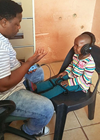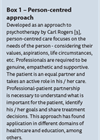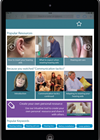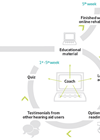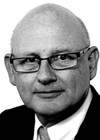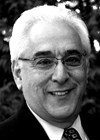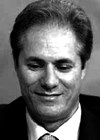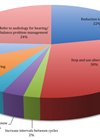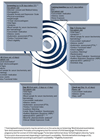Audiology features
Screening for hearing loss with mHealth solutions
With the number of people suffering from hearing loss growing all the time, the need for early detection and intervention is imperative. De Wet Swanepoel discusses two examples of mHealth possibilities for hearing screening which, as a low cost solution,...
A person-centred approach to telehealth
“The time when telehealth was a remote, abstract concept has come to an end”. Deborah Ferrari and Lise Lotte Bundesen discuss how to advance person-centred care in hearing rehabilitation through online tools and training. The time when telehealth was a...
Alternative listening devices: reaching the places hearing aids don’t
The stigma surrounding hearing aids means that many people who would benefit from wearing them are put off from doing so. Alternative listening devices could provide the solution to this. David Maidment discusses these devices, their effectiveness and the impact...
Knowledge is power: the power of mobile technologies to enhance hearing-related knowledge
In recent years, the widespread use of smartphones has made it increasingly possible to improve knowledge, understanding and delivery of hearing healthcare. Melanie Ferguson tells us about the advances in mobile-health applications. Think back to five years ago - what...
User perspectives of online audiological rehabilitation programmes
Recent research shows that online audiological rehabilitation programmes have the potential to improve the quality of life of hearing aid users. However, there are still areas that need need improvement. Elisabet Thorén discusses some of the problems people face when...
Noise monitoring on a smartphone
“The smartphone has more computing power than was used to put the first man on the moon.” Robert Eikelboom discusses the potential of the smartphone as an effective noise monitoring device. Noise exposure and public health Excessive exposure to noise...
Drug side-effects on audiological and vestibular testing
Are they a malingerer? Or perhaps they are inattentive? It may be their drugs! Robert DiSogra considers the side-effects of medication on the test subject. The audiogram serves many purposes in clinical practice. For the audiologist, it helps to differentiate...
The effects of polypharmacy in the elderly
Another pill to cure the ill? Alec Lapira discusses the warning signs of polypharmacy in the elderly population. Polypharmacy in the elderly Polypharmacy – defined as the use of five or more medications – occurs in 20–37% of older people...
Evidence-based practice: management of sudden sensorineural hearing loss
What is the current evidence for medical management of sudden sensorineural hearing loss? Jessica Choong and Stephen O’Leary present a review of the current evidence of treatments options. Sudden sensorineural hearing loss (SSNHL) causes significant distress and, in many cases,...
Audiological monitoring in ototoxicity - Are we doing enough?
In this article Ghada Al-Malky explores the dichotomy of life-saving, yet hearing loss-causing medication, and questions whether the hearing healthcare community is doing enough to prevent preventable hearing loss. Ototoxicity is the damage to hearing and / or balance functions...
A place for everything and everything in its place: the practicalities of randomised clinical trials
Will this pill cure tinnitus? Bonnie Millar describes one trial that has investigated the possibility whilst describing the path of drug trials in the UK. Background In the last quarter of 2014, a clinical trial (QUIET-1; ClinicalTrials.gov Identifier: NCT02315508) commenced...
The search for pharmacological treatments for hearing loss and tinnitus
Where are we in our search for a hearing restoration grail? Nicola Robas leads us through the map pieces discovered in creating a pharmaceutical answer to hearing loss and tinnitus. Together, hearing loss and tinnitus affect over one in six...


